8F2 Mathematics
Section outline
-
-
Student ability to plan and conduct an investigation using the statistical enquiry cycle.
-
-
Welcome back to 2020. My name is Mrs Williamson and I will be your math teacher for part of the first term. I can be contacted on lwilliamson@mhjc.school.nz if you need to email me at any time. We have an exciting term planned and I look forward to getting to know you all.
Remember to bring both your books to school for Monday, then we can leave them in the cupboards. Have a fun weekend.
-
Week 2: This week we are just getting to know each other, and settling into Maths.
Maths Buddy
Relax! As this has not been set up yet.
Classwork Activities:
Please follow the attached link for your resources for this week.
https://sites.google.com/mhjc.school.nz/forest-whanau-year-8/home

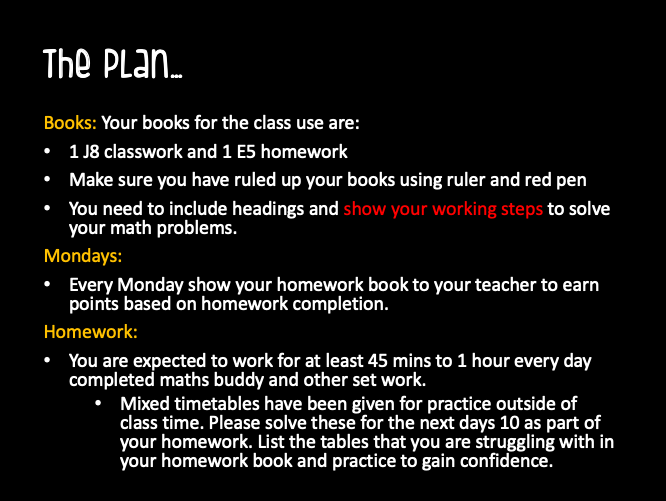
-
Week 3: Classwork learning objectives are on this link https://sites.google.com/mhjc.school.nz/forest-whanau-year-8/home
Classtime Activities
Classwork is on this site: https://sites.google.com/mhjc.school.nz/forest-whanau-year-8/home
Maths Buddy:
Math Buddy is your priority, please complete this by the timeframe. We have set a nice easy one!! If you have completed this please do a little more on your classwork or the times' tables (https://sites.google.com/mhjc.school.nz/forest-whanau-year-8/home) on this site is a times table worksheet, you may like to print this out to help you.
Ninjas Activities:

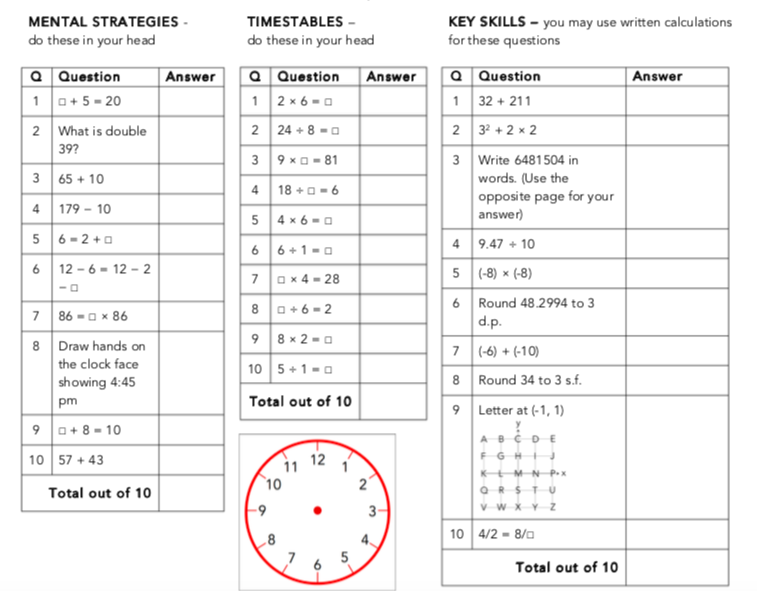
-

Week 4: Classwork learning objectives are on this link https://sites.google.com/mhjc.school.nz/forest-whanau-year-8/homeClasstime Activities:
This week we are working through the new tasks for your groups for Levels 3, 4 or 5 on Google Classroom.
- Read this week's quote, what does this mean to you?
- Visit Google Classroom for your classwork.
- Some of you may have received an invite from me to move up a group.
- Some of you are waiting for new easttle grades.
- If too easy, see me and let's solve.
- Your aim is to read and understand what is being asked.
- Try and make connections with your learning.
- Write down any new rules before you start answering the questions.
- Collaborate with your peers.
- Check-in with your peers and your teacher.
- Remember, there is a Math Homework Club. This is worth attending.
Math Buddy:
- Is your priority, please complete this by the timeframe or come and see me.
Ninja Activities:

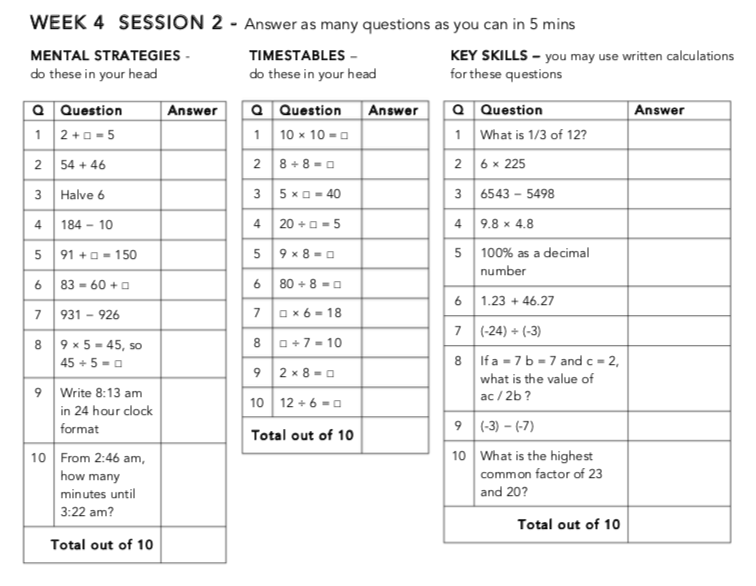
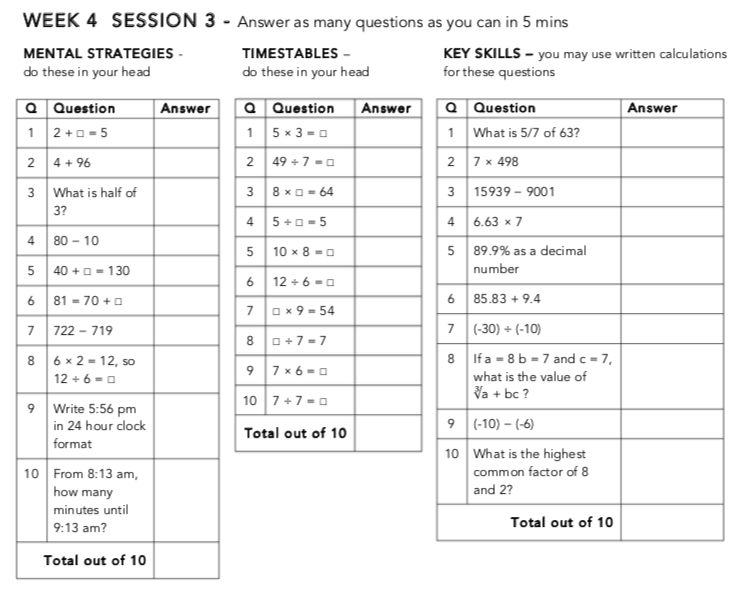
-

Week 5: Classwork learning objectives are on this link https://sites.google.com/mhjc.school.nz/forest-whanau-year-8/home
Class time Activities: Great work this week 8F2
Google Documents. Levels 3, 4 or 5 on Google Classroom.
- Read this week's quote. How can you apply this to math this week?
- Level 3 Activities: Understanding and solving place value and decimals, adding and subtracting decimal numbers, ordering decimal numbers.
- Level 4 Activities: Understanding negative numbers, understanding and solving negative numbers using a number line, exploring more on negative numbers, understanding and solving squares and square roots.
- Level 5 Activities: Standard form and decimal form, Approximations, estimations and rounding using decimal places, Approximations, estimations and rounding and significant figures, finding squares and estimating square roots.
- Try and connect your new pathways to deepen your learning. In other words, try and understand what you are learning and why
- Don't forget to write down any new rules before you start answering the questions.
- Collaborate with your peers.
- Check-in with your peers and your teacher.
- Remember, there is a Math Homework Club. This is worth attending.
Math Buddy:
- Is your priority, please complete this by the timeframe or come and see me.
Ninja Activities:
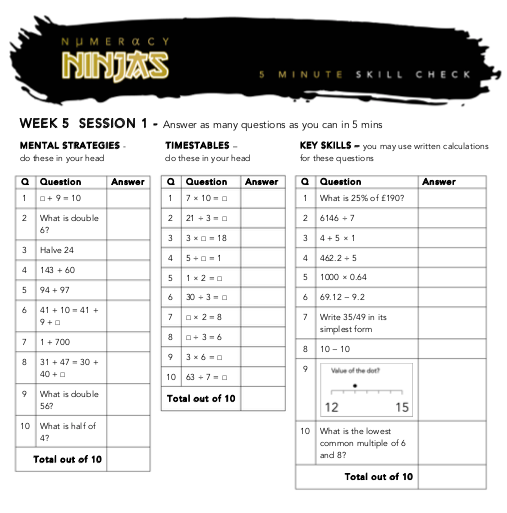


-


YOU HAVE ALL BEEN WORKING SO HARD IN MATHS - WELL DONE!
Week 6: Classwork learning objectives are on this link https://sites.google.com/mhjc.school.nz/forest-whanau-year-8/home
Google Documents. Levels 3, 4 or 5 on Google Classroom.
- Read this week's quote. How can you apply this to math this week?
- Level 3 Activities: Understanding and solving place value and decimals, adding and subtracting decimal numbers, ordering decimal numbers.
- Level 4 Activities: Understanding negative numbers, understanding and solving negative numbers using a number line, exploring more on negative numbers, understanding and solving squares and square roots.
- Level 5 Activities: Standard form and decimal form, Approximations, estimations and rounding using decimal places, Approximations, estimations and rounding and significant figures, finding squares and estimating square roots.
- Try and connect your new pathways to deepen your learning. In other words, try and understand what you are learning and why
- Don't forget to write down any new rules before you start answering the questions.
- Collaborate with your peers.
- Check-in with your peers and your teacher.
- Remember, there is a Math Homework Club. This is worth attending.
Math Buddy:
- Is your priority, please complete this by the timeframe or come and see me.
Ninja Activities:
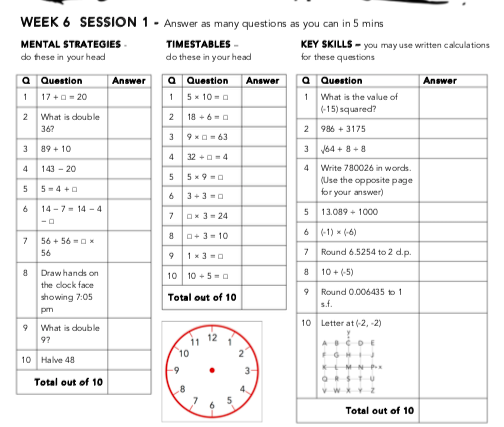
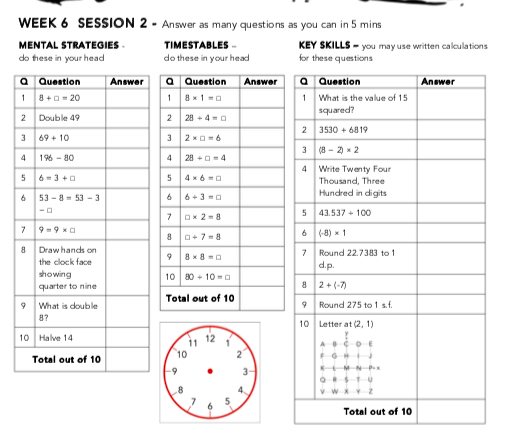

-

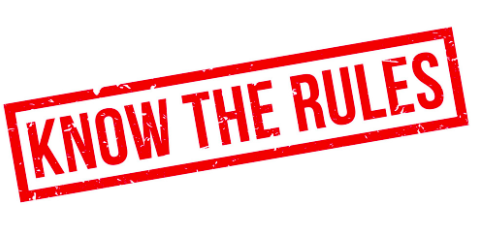
THOSE AHA MOMENTS WON'T HAPPEN UNLESS YOU KNOW AND UNDERSTAND THE MATH RULE....
INCREDIBLE PEER SHARING AND COACHING THIS WEEK - WHAT A TEAM! 8F2 YOU ROCK! LOTS OF AHA MOMENTS!
Week 7: Classwork learning objectives are on this link https://sites.google.com/mhjc.school.nz/forest-whanau-year-8/home
Google Documents. Levels 3, 4 or 5 on Google Classroom.
- Read this week's quote. How can you apply this to math this week?
- Level 3 Activities: Creating decimal numbers, Estimation involving money, Basic Multiplication Facts, Adding and Subtracting Whole Numbers, Making Multiplication Cards to Learn at Home, Adding and Subtracting Decimals
- Level 4 Activities: Expressing a decimal as a percentage, Converting between fractions, decimals and percentages, expressing as a fraction or percentages as a whole, rounding and finding estimates (up to task 19)
- Level 5 Activities: Expressing decimal as a percentage, Converting between fractions, decimals and percentages, finding percentage of a quantity, multiplying and dividing by decimals (up to task 19)
- Try and connect your new pathways to deepen your learning. In other words, try and understand what you are learning and why
- Don't forget to write down any new rules before you start answering the questions.
- Collaborate with your peers.
- Check-in with your peers and your teacher.
- Remember, there is a Math Homework Club. This is worth attending.
Math Buddy:
- Is your priority, please complete this by the timeframe or come and see me.
-

Google Documents. Levels 3, 4 or 5 on Google Classroom.
- Read this week's quote. How can you apply this to math this week?
- Level 3 Activities: Multiplication Cards to Learn at Home, Adding and Subtracting Decimals, multiplying and dividing by decimals (up to task 19)
- Level 4 Activities: Estimating totals involving money, Multiplying and dividing by powers of 10, Multiplying and dividing by decimals (up to task 22)
- Level 5 Activities: Understanding negative numbers, Understanding and using a number line, More negative numbers, Bank overdrafts (up to task 24)
- Try and connect your new pathways to deepen your learning. In other words, try and understand what you are learning and why
- Don't forget to write down any new rules before you start answering the questions.
- Collaborate with your peers.
- Check-in with your peers and your teacher.
- Remember, there is a Math Homework Club. This is worth attending.
Math Buddy:
- Is your priority, please complete this by the timeframe or come and see me.

Remember: If we need to work from home at any stage, I will keep posting a summary here what we do each week, but we will work as a class from Google Classrooms - then we can talk and communicate with each other. We are on the home straight in math. You have worked so hard this term - well done!
FOCUS / ARONGA learning intentions:
- We are FOCUSING...our learning on developing our statistical skills by identifying areas we need to focus on.
- We are FOCUSING...our learning on developing our algebraic skills by solving a variety of mathematical problems.
-

Term 2, Week 1
Welcome back to your new way of learning - online!! I hope you have had a great break.
This week will be a bit strange and it will take us a few sessions to get in a routine. I will be online for all your classes this week, so please check later today for an email for joining me on Google Hangouts. We are coming up to an assessment, which we will probably do through Education Perfect. But more on this later. Remember, you can email me at any time if you are stuck or have concerns.
Term One Assessment: Numbers to be completed on Education Perfect
- Our goal this week is to practice for our Education Perfect Assessment which will complete our learning for the Term One Context: Face-Off Challenge
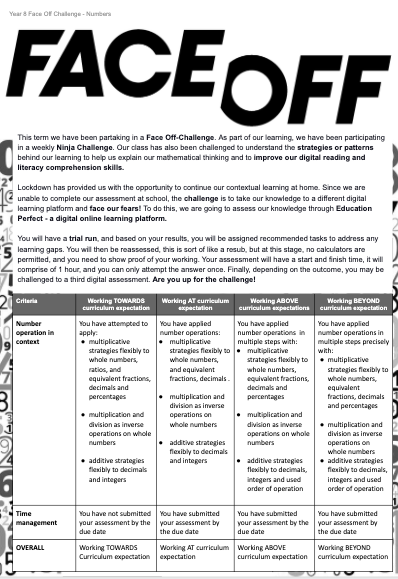
-

Term 2, Week 2
Welcome to this week. We are trialling 'Number' on Education Perfect and your feedback is very important.
Your goals this week are to:
- Complete your first Assessment Task from Education Perfect
- Give Mrs Williamson feedback from our trial.
- Practise exercises that have been set based on your results.
- Redo our Assessment Task from Education Perfect and submit our workings. Remember, no calculators are to be used.
- Complete your Maths Buddy Tasks, the goal is to achieve 80%.
-

Term 2, Week 3
We only have one lesson this week, on Friday. This is a tidy up week of any unfinished tasks.
Your goals this week are to:
- Finish off any set revision exercises from Education Perfect
- Complete another Numbers Assessment Task, if this has been assigned
- Complete any unfinished work in our booklets (the one we were working on in class, but I think most of you have finished this)
- And....off course, complete your Maths Buddy Tasks (well done on last weeks results - I was very impressed!)
-

Term 2, Week 4
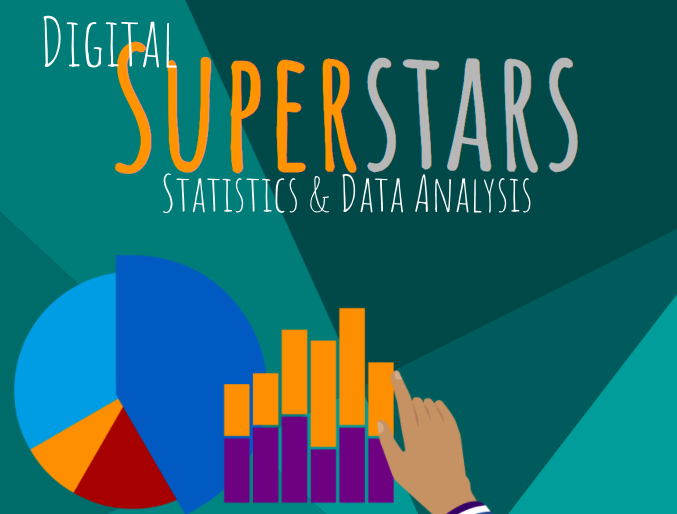
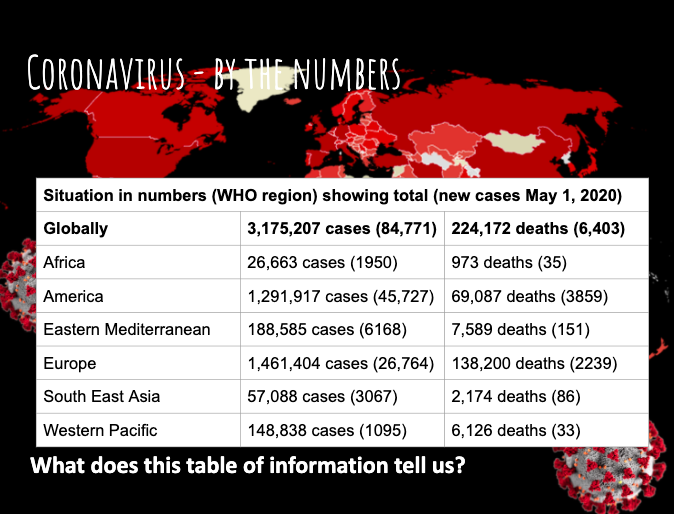
This week we are starting our new context for term two - Superstars.
For our learning, we are going to start by investigating data provided by the WHO (World Health Organisation) on the Global Coronavirus Situation in Numbers. We will then design and construct a variety of graphs to identify data relationships, followed by analysing the data so we can make statements and comparisons.
The skills we will learn will also help us to become Superstars with our Science Fair Project and our Minute to Win it Challenge, in PE in Health.
Learning intention: (We are learning to…)
- Analyse data and display in graphical format using Google Sheets.
Success criteria: (I can…)
- Collect data
- Sort information into categories
- Record data in tables
- Plot graphs to identify relationships between variables
- Answer questions by sorting, organising and arranging information
- Make statements about the findings
Activities:- Watched a short video on 'Which Graph to I use?'
- Developing an understanding of how to read data tables
- Discovering an understanding of the global coronavirus numbers by region
- Transforming the data into spreadsheets
- Practising how to set up a graph using spreadsheets
- Designing a pie chart using topline data - learning skills of titles, sorting etc.
- Publishing our learning onto one page shared class Google Sheet
- Demonstrating our understanding by making statements about the data
- Learning skills as a class of collaborating and sharing our learning
Homework- Priority: Maths Buddy
- Classwork: No class homework this week, unless you contact me for help with your graph.
- Education Perfect: Tasks have been set for you to do, at your leisure, based on your Term One Assessment Grade for Numbers.
EXPLORE / TŪHURA learning intentions:
- We are EXPLORING... statistical inquiry model - by observing data, carrying out statistical investigations, collecting and organising discrete data, grouping data, graphing - histograms, leaf graphs, pictograms, plot graphs, strip graphs, percentage graphs, calculating pie graphs using a protractor, creating time-series data, and organising data to analyses and write statistical reports.
- We are EXPLORING... algebra - generalising and representing the patterns and relationships found in numbers, shapes, and measures, observing and carrying out algebraic convictions, substituting variables, expanding, factorising.
FOCUS / ARONGA learning intentions:
- We are FOCUSING...our learning on developing our statistical skills by identifying areas we need to focus on.
- We are FOCUSING...our learning on developing our algebraic skills by solving a variety of mathematical problems.
-

Term 2, Week 5
Learning intentions: See week 4
Success criteria: See week 4
Activities: See week 4
This is some of the graph analysis work we have completed this week.
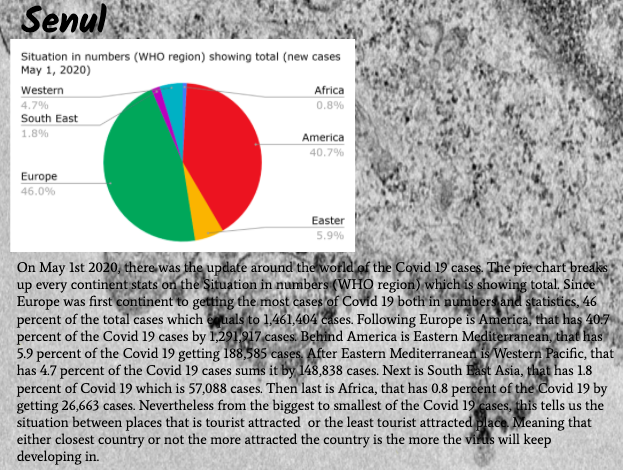
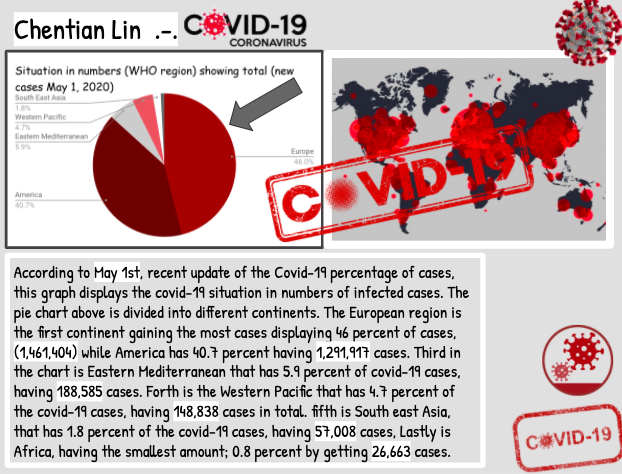
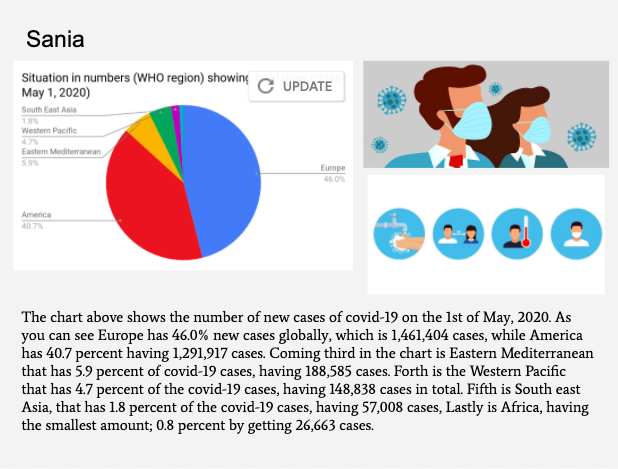
EXPLORE / TŪHURA learning intentions:
- We are EXPLORING... statistical inquiry model - by observing data, carrying out statistical investigations, collecting and organising discrete data, grouping data, graphing - histograms, leaf graphs, pictograms, plot graphs, strip graphs, percentage graphs, calculating pie graphs using a protractor, creating time-series data, and organising data to analyses and write statistical reports.
- We are EXPLORING... algebra - generalising and representing the patterns and relationships found in numbers, shapes, and measures, observing and carrying out algebraic convictions, substituting variables, expanding, factorising.
FOCUS / ARONGA learning intentions:
- We are FOCUSING...our learning on developing our statistical skills by identify areas we need to focus on.
- We are FOCUSING...our learning on developing our algebraic skills by solving a variety of mathematical problems.
-

Term 2, Week


Learning intentions: Refer to week 4
Success criteria: Refer to week 4
Activities:
- Monday - settling in after being in lockdown, own revision lesson for eAsstle test
- Tuesday - completed 1 hour easttle Number assessment
- Friday - summarised where we were at in our learning and the tasks going forward - Maths Buddy, Education Perfect, introduced statistics, discussed combined PE and health assessment, wrote our own definitions for statistical terms mean, mode, median and range.
EXPLORE / TŪHURA learning intentions:
- We are EXPLORING... statistical inquiry model - by observing data, carrying out statistical investigations, collecting and organising discrete data, grouping data, graphing - histograms, leaf graphs, pictograms, plot graphs, strip graphs, percentage graphs, calculating pie graphs using a protractor, creating time-series data, and organising data to analyses and write statistical reports.
- We are EXPLORING... algebra - generalising and representing the patterns and relationships found in numbers, shapes, and measures, observing and carrying out algebraic convictions, substituting variables, expanding, factorising.
FOCUS / ARONGA learning intentions:
- We are FOCUSING...our learning on developing our statistical skills by identifying areas we need to focus on.
- We are FOCUSING...our learning on developing our algebraic skills by solving a variety of mathematical problems.
-

Term 2, Week 7 Statistics and algebra
Level 5
Learning intentions: See below
Success criteria:- I can answer 10 quick questions
- I can define words discrete and continuous
- I can organise data into frequency tables
- I can define and work out the average (mean) or given stats
- Statistic Assessment sheets - 10 quick questions (must show working, must show units), write down and new strategies into your books, worksheets need to be glued into your books
- Homework - Maths Buddy - Completing numbers (this has been reduced down)
- Homework - Education Perfect Algebra
- Videos to help - Dividing amounts into a ratio
Level 3 and 4
Learning intentions: See below
Success criteria:- I can answer 10 quick questions
- I can define statistical words sample, questionnaire, population, survey, random, biased, representative sample
- I am learning how to design a questionnaire
- I can define the words discrete and continuous
- I can table my results into a frequency table
- Statistic Assessment sheets - 10 quick questions (must show working, must show units), write down and new strategies into your books, worksheets need to be glued into your book
- Homework - Maths Buddy - Completing numbers (this has been reduced down
- Homework - Education Perfect Algebra
- Videos to help - Finding angles on a straight line
-----------------------------------------------------------EXPLORE / TŪHURA learning intentions:
- We are EXPLORING... statistical inquiry model - by observing data, carrying out statistical investigations, collecting and organising discrete data, grouping data, graphing - histograms, leaf graphs, pictograms, plot graphs, strip graphs, percentage graphs, calculating pie graphs using a protractor, creating time-series data, and organising data to analyses and write statistical reports.
- We are EXPLORING... algebra - generalising and representing the patterns and relationships found in numbers, shapes, and measures, observing and carrying out algebraic convictions, substituting variables, expanding, factorising.
FOCUS / ARONGA learning intentions:
- We are FOCUSING...our learning on developing our statistical skills by identifying areas we need to focus on.
- We are FOCUSING...our learning on developing our algebraic skills by solving a variety of mathematical problems.
-

Term 2, Week 8
Level 3 and 4
Learning intentions: See below
Success criteria:
Sheets 3/4/5- 3 - I can read and understand column and dot plot graphs, create a column and dot plot graph
- 4 - I can read and understand histograms, and how to create a histogram
- 5 - I can read and understand stem and leaf graph, and create a stem and leaf graph.
Level 5
Success criteria:
Sheets 3/4/5/6/7- 3 - I can define the words average, median, mode and mean, find the averages, work through problem examples, understand histograms. create histogram
- 4 - I can define the range, calculate range, median and quartiles, draw box and whisker graphs
- 5 - I can read and understand the column graph, create column graphs
- 6 - I can read and understand histograms, create a histogram
- 7 - I can read and understand pictograms, time-series graphs, dot plots, and a percentage bar graphs
Activities:- Statistic Assessment sheets - 10 quick questions (must show working, must show units), write down and new strategies into your books, worksheets need to be glued into your book
- Homework - Maths Buddy - Completing numbers (this has been reduced down
- Homework - Education Perfect Algebra
Videos and images to help- Videos to help , ;

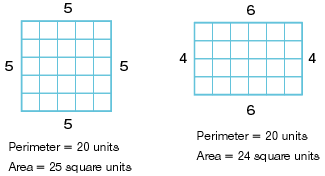

EXPLORE / TŪHURA learning intentions:
- We are EXPLORING... statistical inquiry model - by observing data, carrying out statistical investigations, collecting and organising discrete data, grouping data, graphing - histograms, leaf graphs, pictograms, plot graphs, strip graphs, percentage graphs, calculating pie graphs using a protractor, creating time-series data, and organising data to analyses and write statistical reports.
- We are EXPLORING... algebra - generalising and representing the patterns and relationships found in numbers, shapes, and measures, observing and carrying out algebraic convictions, substituting variables, expanding, factorising.
-

Term 2, Week 9
Learning intentions: below
Level 3 and 4
Success criteria:
Sheet 5/6/7/8 and Assessment- 5 - I can read column graphs, create column graphs with titles and labels
- 6 - I can read histograms, create histograms with titles and labels
- 7 - I can read pictograms, read and interpret time-series graphs, and dot plots, work out % of bar graphs
- 8 - I can read pie graphs, complete pie graph calculations, create pie graphs
Level 5
Success criteria:
Sheet 8/9/10/11 and assessment- 8 - I can read pie charts, complete pie chart calculations, create pie graphs
- 9 - I can read stem and leaf graphs, understand scatter graphs, and plot scatter graphs
- 10 - I can define keywords, list outcomes, find relative frequencies and probabilities
- 11 - I can calculate probabilities, calculate chance and read and interpret tree diagrams
- Statistic Assessment Sheets - 10 quick questions (must show ALL working, must show units), write down any new strategies into your books, worksheets need to be glued into your book, continuing working through the tasks
- Homework - Maths Buddy - Completing numbers (this has been reduced down)
- Homework - Completing Statistic Assessment sheets
- Check out the class whiteboard for strategies to help you with your learning
EXPLORE / TŪHURA learning intentions:
- We are EXPLORING... statistical inquiry model - by observing data, carrying out statistical investigations, collecting and organising discrete data, grouping data, graphing - histograms, leaf graphs, pictograms, plot graphs, strip graphs, percentage graphs, calculating pie graphs using a protractor, creating time-series data, and organising data to analyses and write statistical reports.
- We are EXPLORING... algebra - generalising and representing the patterns and relationships found in numbers, shapes, and measures, observing and carrying out algebraic convictions, substituting variables, expanding, factorising.
PLAN & DO / WHAKAMAHI learning intentions:
- We are PLANNING... conducting an investigation using the statistical enquiry cycle.
REFLECT / WHAIWHAKAARO learning intentions:
- We are REFLECTING...on our learnings as part of our plan and do assessment.
-

Term 2, Week 10
Learning intentions: below
Level 3 and 4
Success criteria:
Sheet 5/6/7/8/9 and Assessment- 5 - I can read and understand stem and leaf graphs, create a stem and leaf graph
- 6 - I can read and understand pictograms, pie graphs and strip graphs, create a pictogram, strip graph and pie graph
- 7 - I can create percentage bar graphs, carry out pie graph calculations, and create a pie graph using a protractor
- 8 - I understand time-series graphs, create time-series graphs, and calculate data.
Level 5
Success criteria:
Sheet 8/9/10/11 and assessment- 8 - I can read pie charts, complete pie chart calculations, create pie graphs
- 9 - I can read stem and leaf graphs, understand scatter graphs, and plot scatter graphs
- 10 - I can define keywords, list outcomes, find relative frequencies and probabilities
- 11 - I can calculate probabilities, calculate chance and read and interpret tree diagrams
- Understanding the assessment tasks and requirements as you can have been permitted to work on this during PE when your data collection has been completed (Ms Young).
- Statistic Assessment sheets - 10 quick questions (must show ALL working, must show units), write down any new strategies into your books, worksheets need to be glued into your book, continuing working through the tasks
- Homework - Maths Buddy - Completing numbers (this has been reduced down)
- Homework - Completing Statistic Assessment sheets
- Check out the class whiteboard for strategies to help you with your learning.
Assessment:
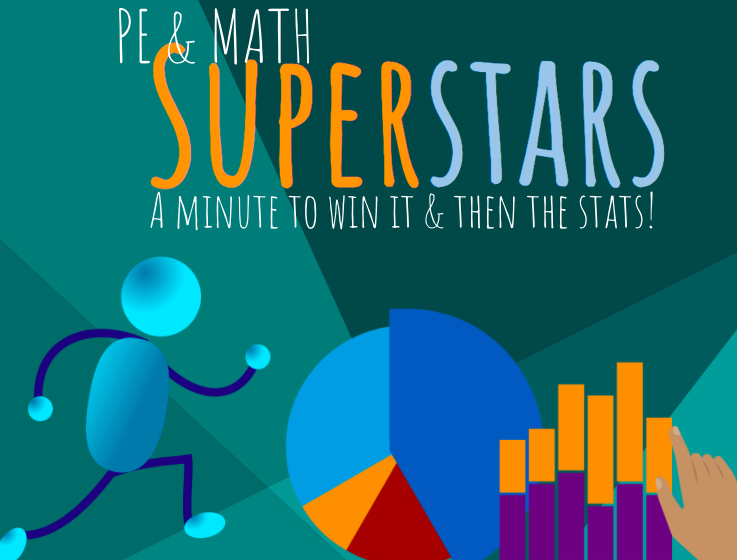
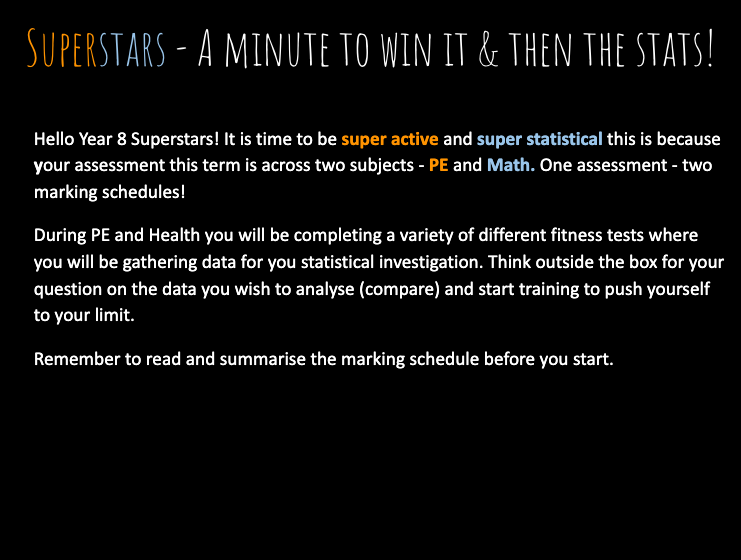
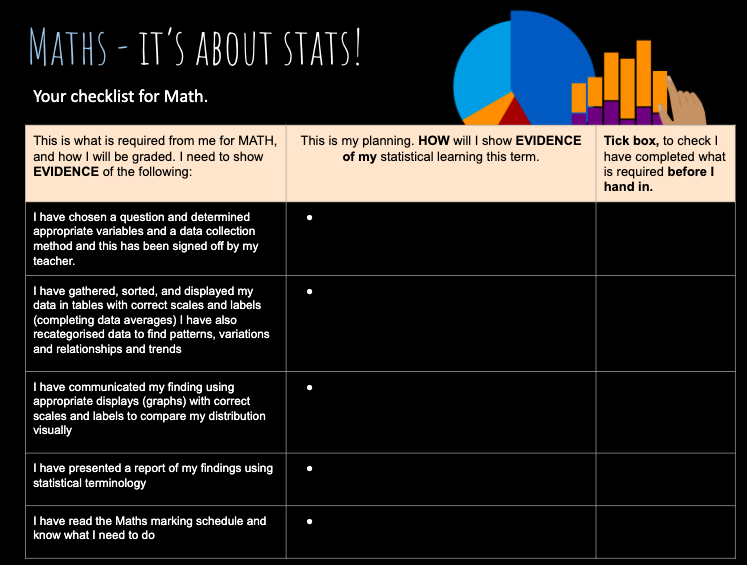
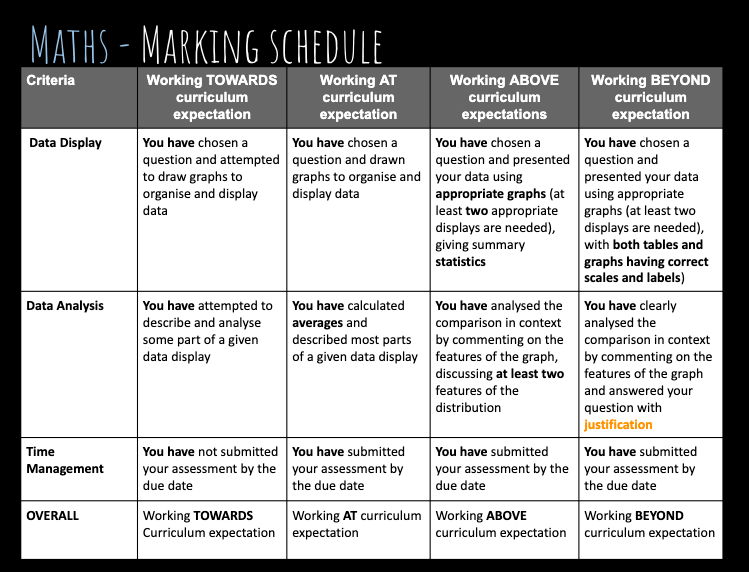
PLAN & DO / WHAKAMAHI learning intentions:
- We are PLANNING... conducting an investigation using the statistical enquiry cycle.
REFLECT / WHAIWHAKAARO learning intentions:
- We are REFLECTING...on our learnings as part of our plan and do assessment.
-

Term 2, Week 11
Activities: Assessment task -
Kia ora...
Around the World in 80 Days
Welcome back to Term 3.
My name is Mrs. Lindsay and I will be continuing your maths journey.
My contact details are alindsay@mhjc.school.nzOur topic this term will allow us to explore different ways and strategies of measuring objects and experiences. Although it's always nice to the get correct "answer" we will also focus on "how" we got there- is there an easier or faster way to do the same thing? As they say, its all about the journey, not the destination!
Achievement objectives
GM4-3 Use side or edge lengths to find the perimeters and areas of rectangles, parallelograms, and triangles and the volumes of cuboids.
Learning Intention
Apply measurement techniques in everyday life
Solo Level and verbs
One
Name, identify, tell, recall, classify, do a simple procedure
Two
Describe, list, enumerate, combine, do algorithms
Three
Compare/contrast, explain, causes, effects, integrate, analyse, relate, apply
Four
Evaluate, theorise, generalise, hypothesise, reflect, generate
-tell the area of a given picture
-count the number of squares to identify the area of the shape
-Find an approximation of the area
-create a square meter from a newspaper and use to make an estimation of an area
-Find areas of the rectangle
-find the areas of composite shapes using rectangles and squares
-calculate areas of the triangles
- Use triangle areas in a composite shape
- Find the area of a parallelogram
-Convert units of measurement
-investigate making rectangles using shapes such as kite, parallelogram, trapezium and rhombus
-Identifying faces to calculate the surface area Calculate the volume of different shapes
investigate volumes in life
Activities:
- Area calculations
Further Learning:
Paint the wall challenge -

Achievement objectives
GM4-3 Use side or edge lengths to find the perimeters and areas of rectangles, parallelograms, and triangles and the volumes of cuboids.
Learning Intention
Apply measurement techniques in everyday life
Solo Level and verbs
One
Name, identify, tell, recall, classify, do a simple procedure
Two
Describe, list, enumerate, combine, do algorithms
Three
Compare/contrast, explain, causes, effects, integrate, analyse, relate, apply
Four
Evaluate, theorise, generalise, hypothesise, reflect, generate
-tell the area of a given picture
-count the number of squares to identify the area of the shape
-Find an approximation of the area
-create a square meter from a newspaper and use to make an estimation of an area
-Find areas of the rectangle
-find the areas of composite shapes using rectangles and squares
-calculate areas of the triangles
- Use triangle areas in a composite shape
- Find the area of a parallelogram
-Convert units of measurement
-investigate making rectangles using shapes such as kite, parallelogram, trapezium and rhombus
-Identifying faces to calculate the surface area Calculate the volume of different shapes
investigate volumes in life
Activities:
- Area calculations
- Challenge - composite shapes
Further Learning:
-
Kia ora...Week 5 Term 3
Achievement objectives
GM4-3 Use side or edge lengths to find the perimeters and areas of rectangles, parallelograms, and triangles and the volumes of cuboids.
Learning Intention
Apply measurement techniques in everyday life
Solo Level and verbs
One
Name, identify, tell, recall, classify, do a simple procedure
Two
Describe, list, enumerate, combine, do algorithms
Three
Compare/contrast, explain, causes, effects, integrate, analyse, relate, apply
Four
Evaluate, theorise, generalise, hypothesise, reflect, generate
-tell the area of a given picture
-count the number of squares to identify the area of the shape
-Find an approximation of the area
-create a square meter from a newspaper and use to make an estimation of an area
-Find areas of the rectangle
-find the areas of composite shapes using rectangles and squares
-calculate areas of the triangles
- Use triangle areas in a composite shape
- Find the area of a parallelogram
-Convert units of measurement
-investigate making rectangles using shapes such as kite, parallelogram, trapezium and rhombus
-Identifying faces to calculate the surface area Calculate the volume of different shapes
investigate volumes in life
Activities:
- Area calculations
- Challenge - making a composite shape and measuring the area of composite shapes
Further Learning:
All learning is posted on Maths Buddy. Pass grade is set at 80%. If you drop below 70%, the task is RESET so you will have to do it again.
If you require extension work, a workbook on Measurement is attached below
-
Activities:
- Investigation
- Area Calculation
- Challenge
Further Learning:
Maths Buddy- Make sure you get this done FIRST!! -
Kia ora...Week6 Term 3
Achievement objectives
GM4-3 Use side or edge lengths to find the perimeters and areas of rectangles, parallelograms, and triangles and the volumes of cuboids.
Learning Intention
Apply measurement techniques in everyday life
Solo Level and verbs
One
Name, identify, tell, recall, classify, do a simple procedure
Two
Describe, list, enumerate, combine, do algorithms
Three
Compare/contrast, explain, causes, effects, integrate, analyse, relate, apply
Four
Evaluate, theorise, generalise, hypothesise, reflect, generate
-tell the area of a given picture
-count the number of squares to identify the area of the shape
-Find an approximation of the area
-create a square meter from a newspaper and use to make an estimation of an area
-Find areas of the rectangle
-find the areas of composite shapes using rectangles and squares
-calculate areas of the triangles
- Use triangle areas in a composite shape
- Find the area of a parallelogram
-Convert units of measurement
-investigate making rectangles using shapes such as kite, parallelogram, trapezium and rhombus
-Identifying faces to calculate the surface area Calculate the volume of different shapes
investigate volumes in life
Activities:
- Investigation
- Area Calculation
- Challenge
Further Learning:
Mths buddy
-
Kia ora...Week 7 Term three
Success Criteria:
Take part in math competition by Education Perfect from Tuesday onwards.
We will be taking part in Education Perfect Math Competition. Its time to brush up your maths skills! All the best.
Activities:
- Take part in maths Education Perfect Competition
- Work on your assigned tasks on Google Classroom and Mission Heights Online
Further Learning:
This week its Education Perfect Competition Week. Let us win some points for our school. -
Kia ora...
Volume of prisms
Success Criteria:
Focus on completing all the work given
Activities:
- View the video
- Work on calculating the volume
Further Learning:
Maths buddy -
Kia ora...Week 9
Success Criteria:
Poster creation
Activities:
- Day Five ( Monday) - Work on your poster
- Day six Complete your poster and upload during class time.
- DAY SEVEN - Testing your knowledge for content.
Further Learning:
No Maths buddy is given till Wednesday as you are working on your poster in the evenings for homework
-
Last Week to catch up on activities given on maths buddy and education perfect.
-
School Holiday
-
School Holiday
-
Kia ora...
Success Criteria:
1. Recap on area
2. Composite shapes
3. Converting units of measurement
4. Learning to calculate volume and surface area
Activities:
- Use Surface area worksheet to work on the application of the discussed work
- Work on volume formula.
Further Learning:
Maths buddy -
Kia ora...
Success Criteria:
Complete the work given last week on Monday
Catch up on the surface area and volume.
Activities:
- Work on the surface area with the teacher ( Group One)
- Group two will work on the volume worksheet.
Further Learning:
Education Perfect and completing maths buddy -
Kia ora...Our week starts on Wednesday this week due to the long weekend.
Success Criteria:
We are learning about transformations
1. Sliding a shape is a translation 2. Flipping a shape is a reflection 3. Turning a shape is rotation

Activities:
- Learn drawing three different methods
Further Learning:
Mathsbuddy .. -
Kia ora...Week Four
Tuesday is Athletics Day
WALT understand how an object can rotate around a fixed point.
Success criteria I know a rotation is a turn around a fixed point and called the centre of rotation. The direction of rotation can be clockwise or anticlockwise.
Activities:
- Complete the rotation activity attached
Further Learning:
Education Perfect and maths buddy -
Kia ora...Week five

Success Criteria:
WALT draw mirror images of an object given
Success Criteria I know a reflection produces a mirror image of the shape. Its made by “flipping” the shape over a fixed line called the line of reflection
Activities:
- Use mirror lines to draw an object.
Further Learning:
Education perfect and maths buddy to completed -
Kia ora...
Success Criteria:
A.O. GM4-5 Identify classes of two- and three-dimensional shapes by their geometric properties.
GM4-6 Relate three-dimensional models to two-dimensional representations, and vice versa.
GM4-8 Use the invariant properties of figures and objects under transformations (reflection, rotation, translation, or enlargement).
Identify and apply geometric properties
Draw isometric drawings and represent different positions
Design the net and make a simple polyhedron
draw diagrams of the solid object made from cubes
Draw solids from different positions
Use sketchpad to show different stages of isometric drawing 3D to 2D
Build solids from diagrams.
Learn triangle properties – sides and angles
Learn to use a compass to find directions and location
Explore tessellations constructed with regular polygon’s
Explore inner angles and exterior angles of triangles and polygons
learn to use the bearing and location on a grid and map
Investigate enlargement and reflection
solve problems using external and internal angles
Activities:
- Use the work displayed on board
Further Learning:
complete education perfect tasks. -
Kia ora...
Success Criteria:
A.O. GM4-5 Identify classes of two- and three-dimensional shapes by their geometric properties.
GM4-6 Relate three-dimensional models to two-dimensional representations, and vice versa.
GM4-8 Use the invariant properties of figures and objects under transformations (reflection, rotation, translation, or enlargement).
Identify and apply geometric properties
Draw isometric drawings and represent different positions
Design the net and make a simple polyhedron
draw diagrams of the solid object made from cubes
Draw solids from different positions
Use sketchpad to show different stages of isometric drawing 3D to 2D
Build solids from diagrams.
Learn triangle properties – sides and angles
Learn to use a compass to find directions and location
Explore tessellations constructed with regular polygon’s
Explore inner angles and exterior angles of triangles and polygons
learn to use the bearing and location on a grid and map
Investigate enlargement and reflection
solve problems using external and internal angles
Activities:
- Use the work displayed on board
Further Learning:
complete education perfect tasks. -
Kia ora...
Success Criteria:
A.O. GM4-5 Identify classes of two- and three-dimensional shapes by their geometric properties.
GM4-6 Relate three-dimensional models to two-dimensional representations, and vice versa.
GM4-8 Use the invariant properties of figures and objects under transformations (reflection, rotation, translation, or enlargement).
Identify and apply geometric properties
Draw isometric drawings and represent different positions
Design the net and make a simple polyhedron
draw diagrams of the solid object made from cubes
Draw solids from different positions
Use sketchpad to show different stages of isometric drawing 3D to 2D
Build solids from diagrams.
Learn triangle properties – sides and angles
Learn to use a compass to find directions and location
Explore tessellations constructed with regular polygon’s
Explore inner angles and exterior angles of triangles and polygons
learn to use the bearing and location on a grid and map
Investigate enlargement and reflection
solve problems using external and internal angles
Activities:
- Use the work displayed on board
Further Learning:
complete education perfect tasks. -
Kia ora...
Success Criteria:
A.O. GM4-5 Identify classes of two- and three-dimensional shapes by their geometric properties.
GM4-6 Relate three-dimensional models to two-dimensional representations, and vice versa.
GM4-8 Use the invariant properties of figures and objects under transformations (reflection, rotation, translation, or enlargement).
Identify and apply geometric properties
Draw isometric drawings and represent different positions
Design the net and make a simple polyhedron
draw diagrams of the solid object made from cubes
Draw solids from different positions
Use sketchpad to show different stages of isometric drawing 3D to 2D
Build solids from diagrams.
Learn triangle properties – sides and angles
Learn to use a compass to find directions and location
Explore tessellations constructed with regular polygon’s
Explore inner angles and exterior angles of triangles and polygons
learn to use the bearing and location on a grid and map
Investigate enlargement and reflection
solve problems using external and internal angles
Activities:
- Use the work displayed on board
Further Learning:
complete education perfect tasks.


